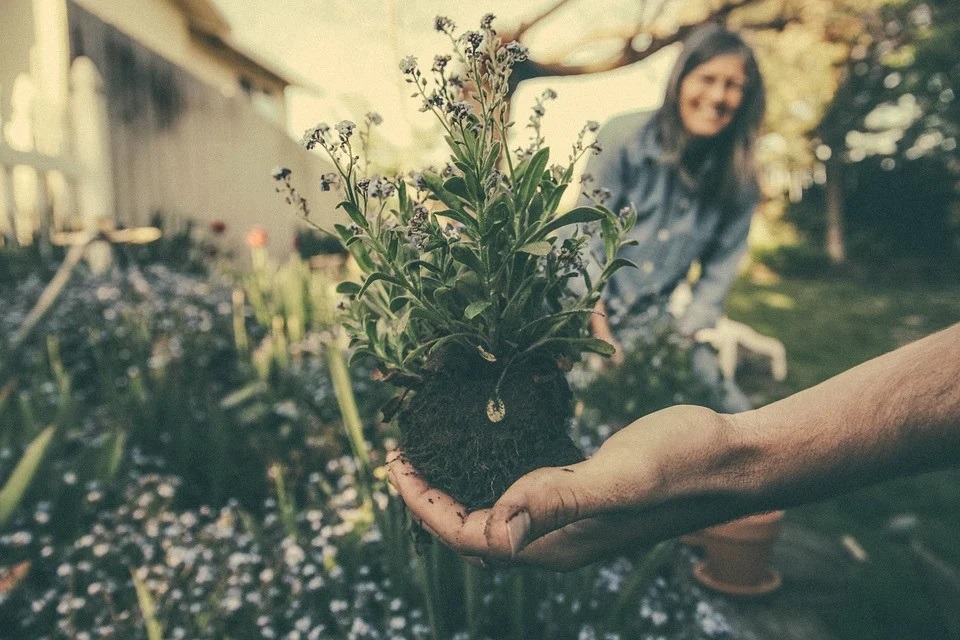You’re probably itching to grow a garden but have no clue where to begin. Don’t worry because we’ve got you covered on that front. You can also visit Fig and Spruce for gardening tips for beginners.
In the meantime, let’s explore the basics of starting a garden so you can grow yours with confidence and pleasure. Remember, a happy gardener grows happy produce.
Growing a Garden in Nine Steps
Growing a garden once you get the hang of things can be an awesome experience, but you have to do some careful planning before that happens. Hence, let’s go through the steps you need to follow. Check out commercial garden maintenance for more information.
Step #1: Figure Out What You Want To Grow Before You Plant Them
Root crops are excellent to grow in a garden but don’t plant them if you don’t eat them. However, an exception is made for flowers, which you should definitely have a few of whether they’re edible or not. Generally, you should focus on produce that you and the rest of the household enjoy eating.
Your choices should also fit your location, so assess your gardening zone before making a decision. You might want to get in touch with experienced gardeners in your area to discover which crops thrive there and which won’t even last a week.
Step #2: Choose Your Location
If you’re growing fruits and vegetables, make sure to plant them in spots that get a minimum of five hours of sun. On the other hand, leafy greens and herbs will require a partially shaded area. Gardens grown in the south would do well with some shade, while northern gardens could need all the sunlight they can acquire.
Step #3: Plan the Garden Beds
Now that you have the location figured out, it’s time to decide on the kind and size of garden bed you want. Each bed type has its pros and cons. Raised beds, for instance, are friendlier on the back but are prone to drying out quicker. On the contrary, sunken beds can give your plants all the moisture they need but might collect a little too much moisture for your liking.
Step #4: Invest in Quality Gardening Tools
The right gardening tools should be quality tools. Going for a high-quality gardening kit from the get-go ensures gardening becomes less of a chore and more of a pleasure. Flimsy equipment makes you question why you even garden in the first place, but top-notch instruments can make you feel at home in your green space.
Step #5: Do Some Soil Testing
Before growing that garden, you actually have to know if your planned plants can survive there. More than that, you should be assured of a thriving garden with the soil you’re working with.
Soil can come as sand, clay, rock, silt, or any mixture of two or more types. In addition, these can have varying levels of acid, pH, and alkaline levels, all of which affect the growth of your plants.
Step #6: Do Some Soil Building
Now that you know what soil you’re working with, it’s time to build it around your plants’ requirements. For instance, if you’re using sod as the base, you’ll need to either cultivate it, chop it up and repurpose it, or smother it with newspaper and cardboard before building a bed on top. Fall would be the best time to do this, but doing it in spring should work, too.
Step #7: Find Out if Plants Are Better Grown as Seeds or Transplants
Some plants are best grown from seedlings, while others are ideal for transplanting. Of course, you might have to grow your transplants from seeds separately, as well.
Knowing how to plant your plant options contributes greatly to how they thrive in your garden. Not to mention, it also takes a huge chunk off your gardening budget.
Step #8: Plant Carefully
Do you see those instructions in transplant containers and seed packets? Follow them carefully so you don’t mess up the groundwork in any way.
We know you’re tempted just to jump in and plant, but that’s not the way things should go. You need to pay special attention to the individual instructions for sowing each plant. Thus, give them the best start at making a home in your green space.
Step #9: Give Your Garden the Time and Effort It Deserves
Starting a garden is one thing; making sure it thrives is another. You might have all the ingredients for the perfect garden set-up, including a dedicated attitude, but note that your garden will perish if the commitment wanes.
Gardening shouldn’t just be a passing fancy. It should be one’s life work and deserves every ounce of devotion and consistency from its carer.
Make Gardening Fun!
People’s interest in gardening typically wanes when they find out the work it takes to grow and maintain one. That’s why there should always be an emphasis on the fun side of gardening. Why make gardening a daily chore when you can turn it into a daily pleasure?
Your attitude towards gardening is shaped by your knowledge on plant choices, gardening methods, and garden maintenance. Have these three down pat, and you’re almost sure to have an enjoyable long-term gardening experience.
